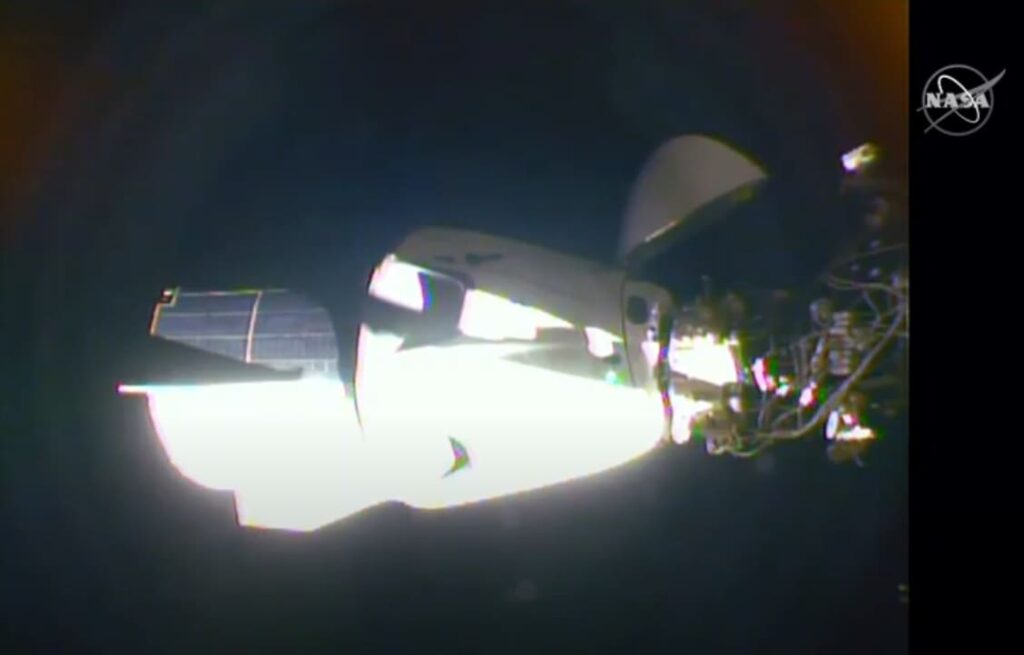
Audience
- Sentiment: Positive
- Political Group: Moderate
- Age Group: 18-35
- Gender: Male
Overview
- Crew-10 mission aims to send astronauts to the ISS aboard SpaceX’s Crew Dragon capsule ‘Endurance’.
- NASA and SpaceX demonstrate adaptability and teamwork in overcoming challenges, particularly with delays from Boeing’s Starliner.
- The ISS serves as a vital research platform for scientific experiments that can’t be conducted on Earth.
NASA’s Exciting Crew-10 Mission: A Leap into the Future of Space Travel
Space exploration has always been a topic that sparks excitement and curiosity, painting pictures of astronauts in sleek spacesuits soaring above the Earth and uncovering the mysteries of the universe. NASA, our homegrown space agency, has been working tirelessly to make this dream a reality, and they are currently gearing up for something pretty spectacular: the Crew-10 mission to the International Space Station (ISS). So, what’s the scoop on this mission, and why should you be paying attention? Let’s dive in!
What is the Crew-10 Mission?
The Crew-10 mission is a pivotal step for NASA, aiming to send astronauts to the ISS aboard a SpaceX Crew Dragon capsule named “Endurance.” This mission is set to launch on March 12 and will involve a crew of four brave explorers: three astronauts and one cosmonaut. Now, you might be wondering what makes this mission special, and how it fits into the bigger picture of space travel.
Crew-10 is remarkable for several reasons. First, it showcases NASA’s ability to adapt and evolve in the face of challenges. In the world of space travel, unforeseen hurdles often pop up, forcing agencies to think quickly and find solutions. In this case, the mission is meant to support Crew-9 members, including NASA astronauts Suni Williams and Butch Wilmore, who have been on the ISS longer than expected due to issues with Boeing’s Starliner spacecraft. By fast-tracking Crew-10, NASA ensures that the existing crew gets the relief they need while keeping the wheels of space exploration turning smoothly.
The Space Shuttle Successor: SpaceX’s Crew Dragon
Now that we know who’s going, let’s look at how they’re getting there. SpaceX has developed a new generation of spacecraft known as the Crew Dragon. This advanced capsule has been flying astronauts to the ISS since 2020, and it has proven to be a reliable option for NASA’s crewed missions.
One particularly cool thing about Crew-10 is that the astronauts will fly in a capsule that has been used before. The Crew Dragon Endurance was on a previous mission, so NASA is repurposing it for this flight. This shows impressive resourcefulness because refurbishing existing spacecraft saves time in preparation, allowing the mission to launch sooner rather than later.
The Role of Teamwork in Space Exploration
When we think about space missions, the image of astronauts floating in zero gravity often pops into our heads. However, behind every successful mission is a massive team working together to make things happen. NASA’s partnership with SpaceX is a prime example of how teamwork can lead to incredible achievements.
These organizations exhibit a blend of innovation, engineering excellence, and problem-solving skills. With issues stemming from Boeing’s Starliner delaying Crew-9’s return, NASA and SpaceX synchronizing their efforts to expedite Crew-10 reflects a fluid and adaptable partnership that has been essential for maintaining operational readiness. This collaboration also highlights the importance of trust and communication, which are key elements in achieving any goal, whether in space or our daily lives.
Facing Challenges Head-On
Space travel isn’t all cool gadgets and stunning views. It comes with its fair share of challenges. The delays faced by Crew-9 are a reminder that space missions can encounter unexpected bumps in the road. Boeing’s Starliner program, intended to assist in transporting astronauts to the ISS, has seen setbacks due to various technical issues. This is where NASA’s quick thinking and proactive measures come into play.
Instead of waiting for the Starliner to be ready, NASA has chosen to expedite Crew-10 using the Crew Dragon. This quick pivot demonstrates how organizations can stay flexible in the face of adversity. It’s like a basketball team adjusting its strategy when the game isn’t going as planned. They have to be ready to think on their feet, communicate with one another, and switch tactics to reach their goals.
The Importance of the International Space Station
Now you might wonder why NASA and other space agencies bother sending astronauts to the ISS so frequently. The ISS acts as an extraordinary laboratory and living space in low Earth orbit. Here, scientists conduct experiments that can’t be done on our planet — think studies involving microgravity and its effects on various physical and biological processes.
The work done aboard the ISS contributes to our understanding of space and Earth. It aids everything from developing new materials to understanding the health effects of long-duration spaceflight. Not only does it push the boundaries of science, but it also empowers countries to work together toward a common goal, promoting international collaboration and friendship.
The Journey Ahead: What’s Next?
After Crew-10 successfully launches and arrives at the ISS, what happens next? Crew-9 will be preparing to return to Earth by late March, marking the end of their extended mission. Flying back home in a Crew Dragon is thrilling in itself! After spending months in the zero-gravity environment, they’ll experience the powerful forces of reentry and splashing down in the ocean.
The return of the Crew-9 astronauts opens up opportunities for new missions and new discoveries. NASA plans to continue launching astronauts into low Earth orbit with missions like Crew-11 and beyond. Each mission is a step toward my next question: What responsibilities await astronauts heading into space in the years to come?
Conclusion: Your Thoughts Matter!
Space exploration is an exhilarating journey, and every mission charts a path toward new discoveries. NASA’s Crew-10 mission is a testament to how adaptability and teamwork can create remarkable opportunities even when faced with unexpected challenges. Whether it’s repurposing a spacecraft, collaborating with a partner like SpaceX, or sending astronauts into the unknown, NASA continues to push the boundaries of what we know.
As we look ahead, the question that truly lingers is: What do you think will be the next big breakthrough in space travel? Feel free to comment below, and let me know your thoughts! Your ideas might just inspire the next generation of explorers as we embark on this thrilling journey into the future of space.






